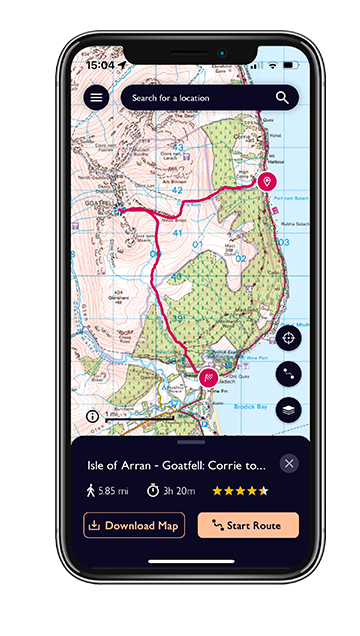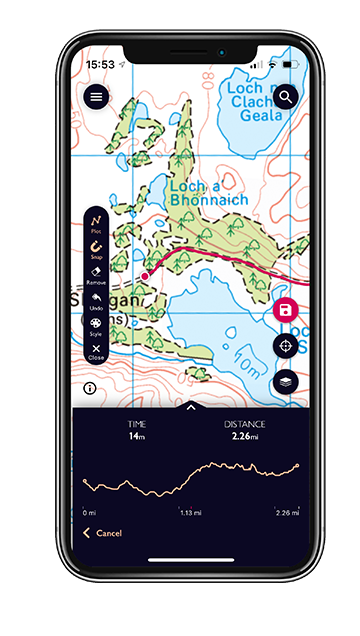Plotting Britain's bakes on a map
Discover some traditional baked treats from all corners of Great Britain and follow these easy recipes so you can prepare the perfect picnic or stock up for your next walk.


DairyDairy • • Jul 16, 2021 • 10 min read

Discover some traditional baked treats from all corners of Great Britain and follow these easy recipes so you can prepare the perfect picnic or stock up for your next walk.
Whether you enjoy finding a beautiful picnic spot or prefer to re-fuel on the go, food is likely to be something you think about when planning outdoor activities. Tasty snacks are especially good at providing a much-needed boost, both mentally and physically.
.png)
We've rounded up ten of the most delicious British treats from the Around Britain Cookbook so you can try your hands at baking some regional specialities, old and new. Each recipe will make a good-sized batch for you to share with your adventure buddies or pop it in the freezer for your next day out.
Over the years, the pasty has become synonymous with Cornwall. Back in the day, it was a popular Cornish miner’s lunch with meat and potato at one end and jam or fruit at the other. This recipe for mini, savoury pasties is ideal for a light lunch or snack and are fairly robust should they work their way to the bottom of your bag.
Ingredients
Makes 4

Cornish Pasties
Method
1 Preheat the oven to 220°C/425°F/Gas 7. Mix together the potato, carrot, onion and steak and season well.
2 Roll out the pastry thinly on a lightly floured surface. Cut three saucer-sized circles, then use the trimmings to make a fourth. Divide the meat and vegetables between each circle and brush the edges with egg.
3 Bring up the edges of each pasty to meet at the top. Crimp together the edges by pinching gently with the finger and thumb to seal.
4 Place on a baking sheet and brush all over with beaten egg. Bake for 10 minutes, then reduce the heat to 180°C/350°F/Gas 4 and cook for a further 15–20 minutes until golden and cooked through. Allow to cool for 10 minutes before serving with cherry tomatoes.
These Brummy ‘cakes’ were served at country fairs in late Victorian times. They make a great brunch snack served warm, split and buttered on their own, or topped with scrambled egg, setting you up nicely for a day out on the hills. They can also be cut in half, layered with butter and wrapped for a yummy lunch on the go.
Ingredients
Serves 8

Birmingham Bacon Cake
Method
The climate in Scotland is perfect for oat growing, which means that oats and oatmeal feature in many of the national dishes. Scottish oatcakes are excellent with cheese and chutney so why not try making your own. They are very simple to create and make a luxurious picnic.
Ingredients
Makes 12

Scottish Oatcakes
Method
In the 1740s, a baker in Grantham, Lincolnshire, was making
Grantham whetstones – a hard flat biscuit, offered to travellers for their
journey. The story goes that he got the recipe wrong, and that’s how Grantham
gingerbreads were invented! These are great at stuffing in your pockets on a trail run or sharing a big patch with friends.
Ingredients
Makes 30

Grantham Gingerbreads
Method
Originally made in 1760 by a Mr Palin in Shropshire, these
biscuits were bought as gifts by visitors in much the same way as shortbread in
Scotland or clotted cream in Devon. They have a light texture and lemony
flavour and are very simple to prepare. If you're in need of a sugar boost but don't want anything too heavy then these are a great choice.
Ingredients

Shrewsbury Biscuits
Method
This is the local ‘affectionate’ name for a Liverpudlian
speciality – Lord Nelson cake: a pastry case enclosing a mixture of cake
crumbs, dried fruit and golden syrup – a bit like golden syrup tart. It is
moist and quite sweet, so don’t stint on the lemon juice. These are great for multi-day adventures where other breads/bakes may go a little dry.
Ingredients
Makes 6

Wet Nellie
Method
This exceptionally popular cake is moist and scrumptious.
Both Somerset and Dorset claim to have been responsible for its creation. Pull this out at a picnic to wow your friends and family. Best enjoyed with a cup of tea!
Ingredients
Serves 10

Somerset Apple Cake
Method
‘Hinny’ is a corruption of honey, a Tyneside term of
endearment referring to children and young women. These ‘hinnies’ are cooked on
a grid iron and got their name from the ‘singing’ sound they make as they cook.
In the 19th century, silver threepenny pieces were inserted in the cakes,
especially for the children at birthday parties. These travel well, that's if you can resist eating them all when they are hot off the griddle!
Ingredients
Serves 9

Singin Hinnies
These dainty afternoon teacakes were given their name by
Henry VIII after he was offered a cake in the gardens of Hampton Court Palace
by one of Catherine of Aragon’s ladies, known as maids of honour. It is said
that one of those maids was Anne Boleyn, who subsequently became his second Queen. Have your self a very royal picnic, best served with a glass of fizz!
Ingredients
Makes 24

Maids of Honour
Method
These craggy cakes are meant to look like rocks and the
mixture needs to be quite dry to give the rough appearance. Don’t be tempted to
add any liquid or the buns will spread out. Best served with butter and wrapped tightly, else you'll have a bag full of crumbs!
Ingredients
Makes 12

Brighton Rock Cakes
Method
It was customary for children in Anglesey to receive small
cakes when they went ‘first footing’. They sang a short verse to wish their
neighbours a Happy New Year and the cakes would be a thankful gift. Although
they are referred to as cakes (or, in Welsh, teisienau sir fon), they are much
more like very short biscuits - which make them great for dunking in tea! Make it into a jammy dodger by adding jam to the middle.
Ingredients
Makes 10

Anglesey Cakes
Method
The North West region of England produces a huge variety of fruit cakes. This version from southern Cumbria is unusual, with the addition of pepper, but especially tasty. This hearty snack is perfect for winter walks.
Ingredients
Serves 12

Westmorland Pepper Cake
Method
All these snacks are suitable for most outdoor activities, just wrap them up and pop them into your backpack, dry bag, saddle bag - you name it! Try to keep food at the top of your bag so it doesn't get squashed but if it does, it's still going to taste just as good!
Find more traditional British recipes like these in the Around Britain Cookbook.


From planning & creating your own routes, or discovering ready-made ones; to following & recording your progress and staying on track; OS Maps puts mapping & navigation tools at your fingertips to make it easy for anyone to get outside safely and discover the outdoors.



Be inspired to do more and go further by equipping yourself with the best tools for the job. Our maps are built on 220 years of experience - we keep walkers, runners, cyclists and more safe in the great outdoors all year round.
Available from local outdoors retailers, bookshops and our online OS shop.
Go to the OS shop
